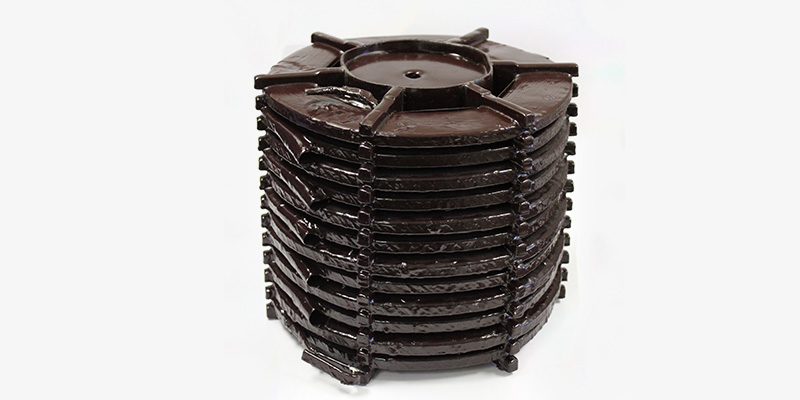Despite our very best efforts, at times we find that the transformer we built exceeds the maximum noise specifications
There are two major sources for transformer noise:
1. By far, the major cause of transformer noise is Magnetostriction
2. Mechanical vibration
Possible Fixes:
Best
Reduce flux density by increasing the amount of steel in the core. This is the most effective but also the most expensive method to reduce noise.
Better
Use a suitable adhesive between the layers of lamination. This is considerably less expensive but adds an extra step in stacking the core.
Make sure that the sheets of laminations are free of contaminants and oil residue. Use a low viscosity epoxy or polyurethane. The cured system should have some resiliency and should not be rigid. The idea is to get a very thin bond line between each sheet. Make sure that the adhesive is fully cured before assembling the rest of the transformer.
Adequate
Apply a low viscosity epoxy or polyurethane product to the lamination edges in the stacked core.
This is probably the least expensive and is fairly effective most of the time. The system must have low mixed viscosity in order to penetrate, at least to some extent, between the individual sheets of laminations in the core. Properly done, this should bond the individual laminations together near the edges thereby reducing their ability to move when magnetized.
The idea behind using a suitable adhesive to bond the individual sheets of laminations together is to limit their ability to move and the extent to which they can extend and contract when the core is magnetized.
The critical considerations for an epoxy or polyurethane system intended for such application are as follows:
- Mixed viscosity - should be as low as possible to penetrate between the laminations as much as possible
- Pot Life - The length of time the system remains useable for the purpose. The viscosity of these products will start to increase as the reaction between resin and hardener progresses
- Maximum Operating Temperature - the system must be designed to operate at the maximum core temperature
- Tensile strength and % elongation properties
- The cured adhesive must not be rigid. It must have some flexibility thus some cushioning effect
Fixing noise due to vibration
Don’t forget about mechanical nose initiated in the core by Magnetostriction travelling to other parts of the transformer. Appropriate cushioning can help with this. Cast polyurethane sheets between rigid surfaces will absorb sound. Flexible connections to rigidly mounted components, such as bus bars, will also reduce noise transmission and in some cases the amplification of sound.
Soft polyurethane or cast epoxy sheets between the core and coils can also work as a quick fix.
Review our Trouble Shooting Guide for more tips: Trouble Shooting Guide








